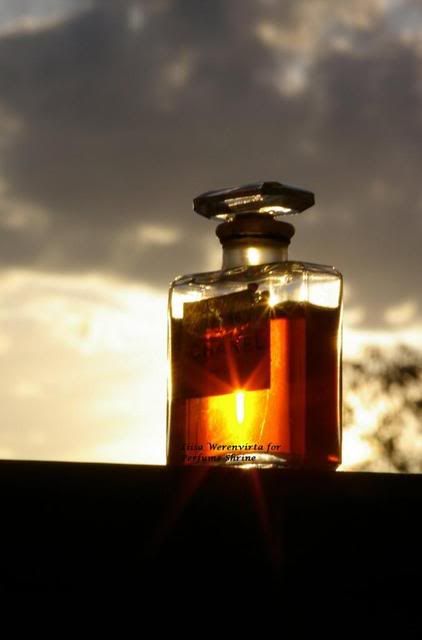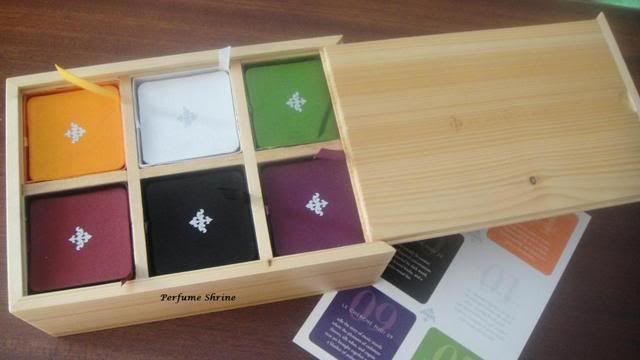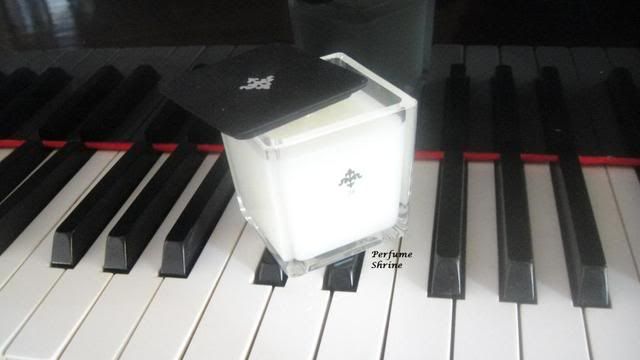.jpg) Introduced in 1978, Magie Noire is an ardent scent full of insupportable sensuality which projects with the mysterious force of an evil heroine; having you grip your seat with a mix of justified horror and perverse admiration at the same time! Its heady, unsettling base accord acts like velvet or a caressing fur coat that is hiding a knife, its interlay of all the powerhouses base notes (musk, civet, castoreum) a sign of brandishing its bravado like a protective amulet against all odds.
Introduced in 1978, Magie Noire is an ardent scent full of insupportable sensuality which projects with the mysterious force of an evil heroine; having you grip your seat with a mix of justified horror and perverse admiration at the same time! Its heady, unsettling base accord acts like velvet or a caressing fur coat that is hiding a knife, its interlay of all the powerhouses base notes (musk, civet, castoreum) a sign of brandishing its bravado like a protective amulet against all odds.Not to be confused with the 1949 classic Magie (its bottle reprised in the design of Lancôme recents Hypnôse and Hypnôse Senses), Magie Noire was conceived at the wake of Opium's oriental success which took the market by (olfactory) storm and along with exact contemporary Rochas Mystère presented the gutsy, murky mossy alternatives before ultrasweet orientals elbowed them off the central shelves in the 1980s.
The bottle was designed by Pierre Dinand in the same forbidden territories as Opium too: The inspiration being medieval alchemical alembics this time ~instead of Japanese inros~ and covered with cabbalistic signs standing for bismuth, verdigris, sulphur and gold.
Despite its murky depths of oakmoss and patchouli, nevertheless ~which have several perfumephiliacs designate it to the chypre fragrance family~ Magie Noire technically belongs to the woody oriental one.
Starting with an ammoniac opening, which oscillates between the feline and the human, and progressing into a purple fruity overlay over the darkest gothic roses imaginable, Magie Noire is a journey into a noir story that unfolds with each passing minute with a new twist and a new thorn to grab you. The white florals in its heart are not read as such, rather the verdant and sharp greens present themselves at an angle (galbanum and hyacinth amongst them allied to the leathery pungency of castoreum). The drydown of the fragrance is much softer, deliciously mellower and musky-incensy sensual with a microscopic caramel note that is kept on the skin for days.
.jpg)
.jpg) The fact that several wearers of the original Magie Noire nowadays find it (catastrophically) changed is no illusion: Lancôme actually reworked the formula of Magie Noire when re-releasing it after its brief discontinuation. The 1980s Eau de Parfum and parfum versions were much edgier and headier with a pronounced spiciness and murkiness that could cut through fog like a beacon. The sillage was unforgettable and typhoon-like in its potency with a sex-appeal-oozing-through-pores vibe that could make you or break you: It was a scent that needed to suit your personality in order to work right and on many it didn't. I recall it worn by women with exquisitely coifed hair which seemed like they braved the elements.
The fact that several wearers of the original Magie Noire nowadays find it (catastrophically) changed is no illusion: Lancôme actually reworked the formula of Magie Noire when re-releasing it after its brief discontinuation. The 1980s Eau de Parfum and parfum versions were much edgier and headier with a pronounced spiciness and murkiness that could cut through fog like a beacon. The sillage was unforgettable and typhoon-like in its potency with a sex-appeal-oozing-through-pores vibe that could make you or break you: It was a scent that needed to suit your personality in order to work right and on many it didn't. I recall it worn by women with exquisitely coifed hair which seemed like they braved the elements.Even in its attenuated form today Magie Noire is definitely not a perfume for young girls, not because perfume has an age, but because like a complex grand cru it requires some getting used to and is an acquired taste. Its distinctiveness lends it a special occasion ambience which it exploits to good effect; it would be both a great waste and a sensory overload to use it all the time. On the contrary, savoured drop by drop, it imbues its wearer with the magical charm of an undestructible protective mantle.
Not only Lancôme changed the formula, they also changed the flacons design from time to time, making it a confusing task for chronologising your bottle.
.jpg) I remember the bottle in the 80s was black, following the one depicted in the ads above, while a maroon version also circulated in the 90s. Recently upon its re-introduction Lancôme simplified the bottle into the columnal solid glass with a metallic-looking top depicted below.
I remember the bottle in the 80s was black, following the one depicted in the ads above, while a maroon version also circulated in the 90s. Recently upon its re-introduction Lancôme simplified the bottle into the columnal solid glass with a metallic-looking top depicted below..jpg) Notes for Lancôme Magie Noire: Bergamot, blackcurrant, hyacinth, raspberry, honey, tuberose, narcissus, jasmine, incense, Bulgarian rose, patchouli, vetiver, castoreum, labdanum, musk and civet.
Notes for Lancôme Magie Noire: Bergamot, blackcurrant, hyacinth, raspberry, honey, tuberose, narcissus, jasmine, incense, Bulgarian rose, patchouli, vetiver, castoreum, labdanum, musk and civet.Magie Noire is available on counters and online priced at $55 USD for a 2.5oz/75ml Eau de Toilette and that's the only version Lancôme currently offers. I wish they'd bring back the parfum! There also was the enigmatic huile parfum (perfume oil) version, reputed to emphasize the greener notes, but I have not tried it (yet) to compare with extrait.
Ads via perfume4u.co.uk and pays.dignois.com. Glass flacon via Lancome.ca. Maroon bottle pic via qb.org.nz. Sorceress illustration via mythicmktg.fileburst
.jpg)
.jpg)



.jpg)

.jpg)
.jpg)



.jpg)
.jpg)
.jpg)




.jpg)
.jpg)
.jpg)





 In researching Calypso the fragrance, I tried to find visuals and was aided by my friend
In researching Calypso the fragrance, I tried to find visuals and was aided by my friend .jpg)







